A LoRa gateway is a wireless communication technology designed for long-range, low-power communication between devices for the Internet of things (IoT). The LoRa gateway receives the data from devices, forwarding it to a network server, which manages the network and handles the data routing and processing.
The gateways typically use a dedicated LoRa concentrator chip to receive and demodulate the signals from end devices. Then, it converts the demodulated signals into IP packets and sends them to a server using a backhaul network via a cellular or Ethernet connection. LoRaWAN is the network protocol that links the LoRa signal.
LoRa gateways are essential components as they enable long-range communication between devices, providing connectivity to the Internet. These gateways may also have a LoRa network server (LNS) installed. Gateways can be single and multi-channel, depending on the requirements.
In this article, we’ll discuss the LoRa gateway’s architecture and the available software platforms.
The gateway architecture
1. The physical layer
The physical layer of the LoRa gateway consists of a radio transceiver that’s capable of receiving LoRa signals from end devices. The gateway typically uses a dedicated LoRa concentrator chip that can demodulate LoRa signals.
There are several types of concentrator chips available:
- Semtech SX1301: a highly integrated baseband processor for long-range, low-power wireless communication using LoRa technology. It’s often used in professional-grade LoRa gateways and supports up to eight channels for the simultaneous reception of LoRa signals.
- Semtech SX1308: a low-cost, low-power LoRa concentrator chip that’s commonly used in indoor and outdoor gateways. It supports up to 8 channels and can handle up to 27 packets per second.
- Semtech SX1257/58: single-channel LoRa transceivers that are often used in low-cost, low-power gateways. They’re capable of receiving and transmitting LoRa signals at a range of up to 15km.
- IMST iC880A: a highly integrated LoRaWAN gateway module that includes a Semtech SX1301 concentrator chip and a low-power microcontroller. It’s widely used in DIY and professional LoRa gateways.
- RAK Wireless RAK831: a LoRaWAN gateway module that features a Semtech SX1301 concentrator chip and a Raspberry Pi-compatible interface. It’s a popular choice for hobbyists and DIY projects.
There are shields also available for the above chips that work with Raspberry Pi.
Each concentrator chips work with RF front ends, which handle the RF singles. Power amplifiers (PA) are used to send and low noise amplifiers (LNAs) are used to receive messages between devices over a long range.
2. The data link layer: responsible for converting the raw demodulated LoRa signals into packets that can be sent over the network.
3. The network layer: responsible for forwarding the LoRa packets to the network server. This is typically done using a backhaul network, such as a cellular or Ethernet connection.
Quectel EC200U is currently one of the most common 4G modules, which is ideal for use when Ethernet or WiFi is unavailable. However, most processor boards come with built-in Ethernet and Wi-Fi chips.
4. The processor: responsible for controlling the gateway hardware, managing the network interface, and executing the gateway software. It’s typically a microcontroller or a system-on-chip (SoC) that runs a real-time operating system (RTOS).
Types of single-channel LoRa gateway processors:
- ESP32: a low-cost, low-power microcontroller commonly used in IoT applications. It features built-in Wi-Fi and Bluetooth connectivity and can be used as a LoRa gateway with a compatible LoRa concentrator board.
- BeagleBone Black: a powerful single-board computer designed for embedded applications. It can run a full Linux operating system and is capable of supporting a LoRa gateway software stack.
Types of multi-channel LoRa gateway processors:
- Raspberry Pi 4: a more powerful version of Raspberry Pi, capable of supporting multiple LoRa channels. It can run a LoRa gateway software stack and can be easily integrated with a multi-channel LoRa concentrator board, such as the RAK2245.
- Intel NUC: a small form factor computer commonly used for industrial and commercial applications. It’s capable of running a full Linux operating system and can support a multi-channel LoRa gateway software stack.
- NVIDIA Jetson Nano: a low-cost, high-performance computer designed for AI and machine learning applications. It can also be used as a multi-channel LoRa gateway with a compatible LoRa concentrator board.
5. The software stack: consists of several layers of software that work together to provide LoRa gateway functionality. This includes the firmware that runs on the gateway processor and the LoRaWAN stack that implements the LoRaWAN protocol.
- The Things Gateway: an open-source LoRaWAN gateway software stack developed by The Things Network community. It works with various LoRa concentrator boards and supports multiple channels and frequency bands.
- Semtech Packet Forwarder: LoRa gateway software stack developed by Semtech, the creator of the LoRa technology. It works with Semtech’s SX1301 concentrator chip and can be used with various microcontrollers and single-board computers.
- ChirpStack Gateway OS: an open-source LoRaWAN gateway software stack by the ChirpStack community. It works with various LoRa concentrator boards and supports multiple channels and frequency bands.
- LoRa Gateway Bridge: LoRa gateway software stack developed by the LoRa Alliance. It works with various LoRa concentrator boards and can be used with several types of microcontrollers and single-board computers.
- TTN Gateway: an open-source LoRaWAN gateway software stack by The Things Network community. It works with various LoRa concentrator boards and supports multiple channels and frequency bands.
6. The antenna: responsible for receiving LoRa signals from end devices. It’s typically a high-gain directional antenna that’s mounted on the roof or at a high point to ensure maximum coverage.
Overall, a LoRa gateway is a complex system that requires specialized hardware and software to function properly. It plays a critical role in LoRaWAN networks by providing a bridge between end devices and the network server — enabling long-range, low-power communication with IoT devices.
You may also like:
Filed Under: IoT applications, Tutorials

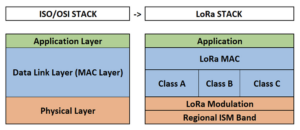

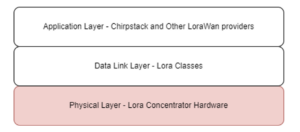

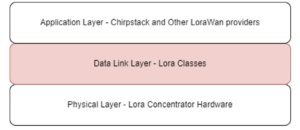

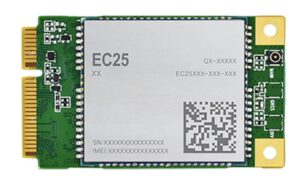
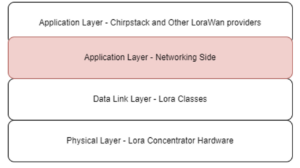
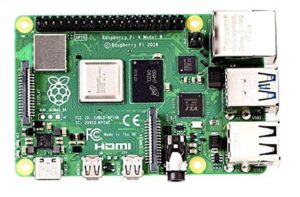




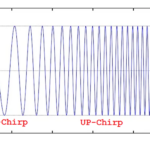

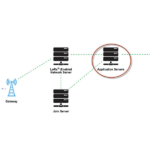

Questions related to this article?
👉Ask and discuss on EDAboard.com and Electro-Tech-Online.com forums.
Tell Us What You Think!!
You must be logged in to post a comment.